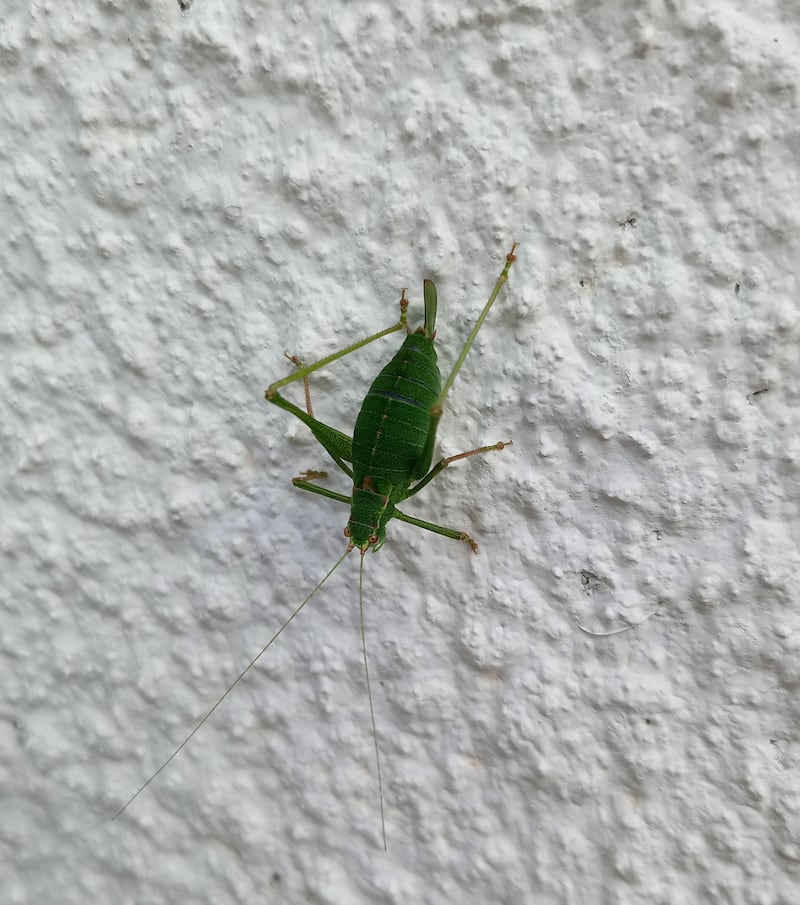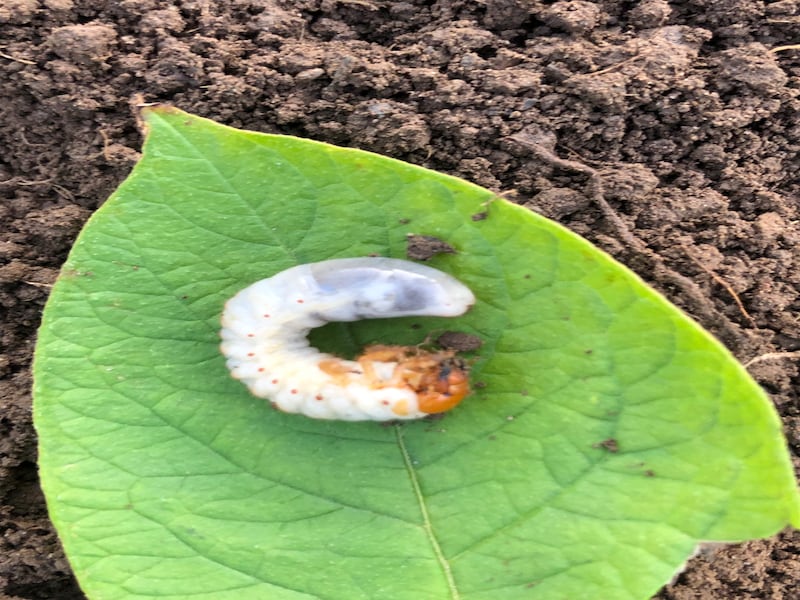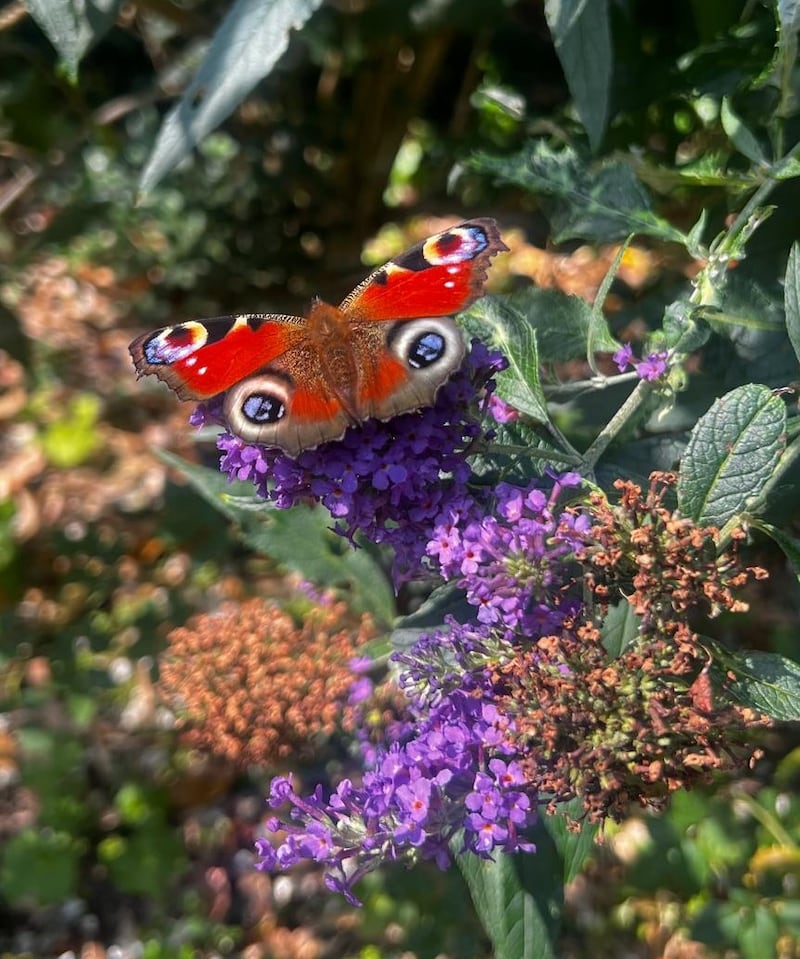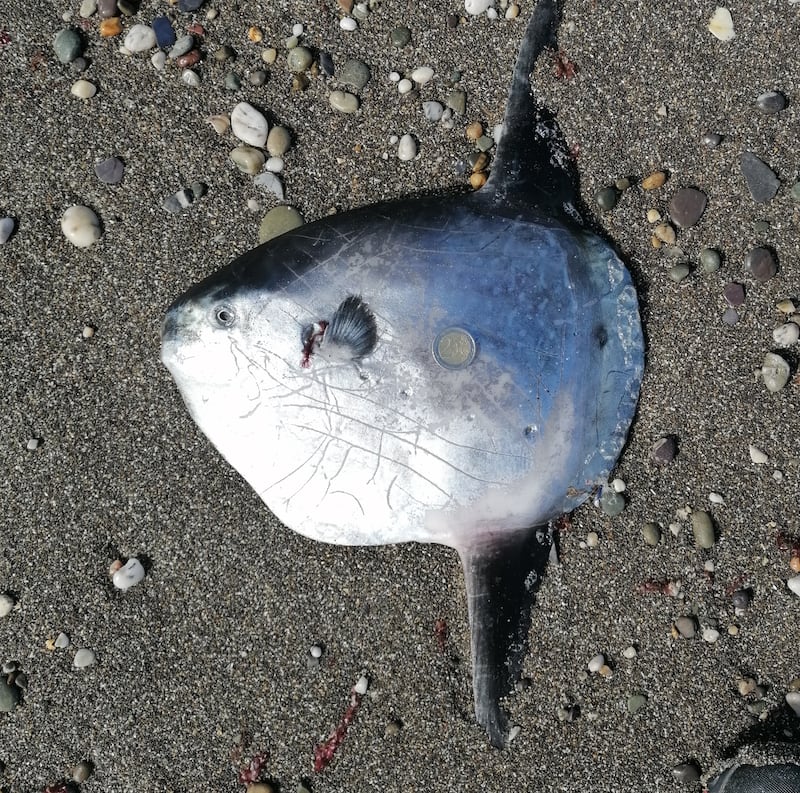I was about to take the clothes off the line when I came across this lovely creature. I have seen them in France but never in Ireland. He isn’t making the best use of his amazing camouflage today. Niall Murphy, Dublin
This is a female convolvulus hawkmoth with its forewings firmly closed, thus covering the characteristic reddish-pink banding on the abdomen. It is a migrant species from southern Europe and north Africa that feeds from dusk at tubular flowers such as night-scented stock. For some reason, lots of the records are found on washing hanging out on a clothesline. The clothes must smell like nectar-containing flowers. In order to improve our knowledge of Irish moth distribution all records should be submitted to the National Biodiversity Data Centre at mothsireland.com/records/

This speckled bush cricket was basking on my garden wall at the end of August. Angela Mason, Co Wicklow
This is an uncommon insect – only recorded near south and east coasts, usually on bramble and shrub. This female has a large obvious ovipositor, which is used for laying its eggs in plant stems or crevices in bark. Its extraordinarily long antennae easily distinguish it from grasshoppers; instead of having its ears on the underside of its abdomen as grasshoppers do, it hears by means of ears on the front legs.
READ MORE

My daughter Róisín and I were recently lifting potatoes when we unearthed a number of invertebrates. I’m assuming they are some sort of larvae and would be grateful if you could shed further light on this and whether they could be bad news for the potatoes. I have my suspicions. The potatoes were planted in land that had not been in use for many years. Enda Molloy, Co Offaly
You are right to be suspicious. This is the larva of the cockchafer or maybug. These plump white C-shaped larvae live in the soil for three years and can cause severe damage to cereal crops. They must have been nibbling at the grass roots, if the land was not in use for years. They can also feed on potato tubers and dig galleries in them. Encourage in lots of badgers – these larvae are one of their favourite foods.

I was here with my family viewing the gardens and house when we came upon this beautiful species. I would love to know what it is and if it is native to Ireland. Taggie Ennis, Co Waterford.
This is a very bright, newly emerged peacock butterfly feeding on the nectar of buddleia, which lives up to its nickname: the butterfly bush. It is a native species that overwinters as an adult. The eggs laid by these adults go on to become the generation that flies in late summer and goes into hibernation by the end of September. They can hibernate in large numbers all together and make a snake-like hissing by rubbing their forewings against their hindwings if disturbed. This certainly terrifies away any rodent that has disturbed them and who has never heard of the activities of St Patrick in the snake-banishing department.

I saw this juvenile sunfish washed up on Long Strand at the end of August. The €2 is for scale! John Doyle, Co Cork
The ocean sunfish is the second largest bony fish on the planet and visits our coasts during the summer months to feast on jellyfish. Adults can reach up to 330cm long. The specimen in the Natural History Museum is over 7ft long from dorsal to ventral fin, as proclaimed by the label. It was caught off Donegal at the end of the 1880s and is well worth a visit.
Please submit your nature query, observation, or photo, with a location, via irishtimes.com/eyeonnature or by email to weekend@irishtimes.com












